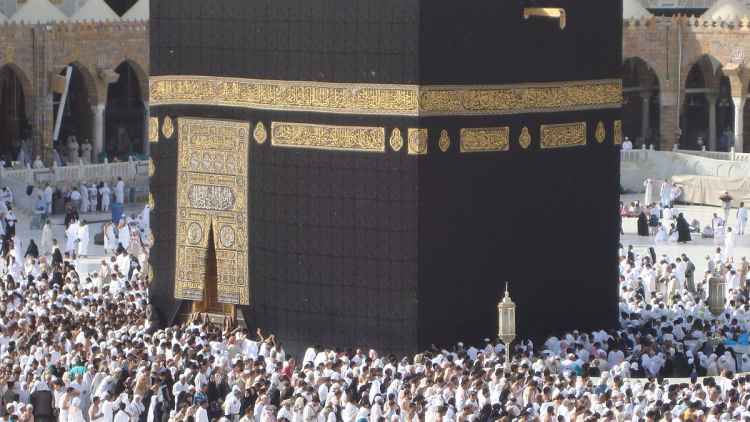ISLAM | Feast of Sacrifice (‘îd al-adha)
THE FEAST OF SACRIFICE
The feast of sacrifice (‘îd al-adha) is also known, by Muslim practitioners, as the “great feast” (îd al-kabîr) or “Takaski” (in West Africa) and, by non-Muslim people as “festival of the lamb”.
Islamic lunar calendar has only two festivities: the one that celebrates the braking of the fasting at the end of the month of Ramadan (îd al-fitr) and the feast of Sacrifice. According to Islamic jurisprudence, those festivities last for three days, allowing people to visit each other and enjoying the festivities with the community. A festivity (‘îd) is seen in Islam as an expression of renovation and revival (i’âda), ideas that share the same etymology in Arabic.
The festivity consist in a ritual that includes a full ritual bath (gusl), a short prayer with a communal sermon in the morning, preferably outdoors, followed optionally (sunna) by the sacrifice of a sheep carried out by the head of the family. The sacrifice of the sheep commemorates the faithfulness and sacrifice that the Prophet Abraham (Ibrâhîm for Muslims) made of his son.
The Feast of Sacrifice is celebrated on the tenth day of the month of dû-l-hijja and commemorates the end of the pilgrimage to Mecca (hajj). Thus, the ritual performed by pilgrims in Mecca is shared simultaneously by all Muslims around the world.
WHAT IS HAJJ?
The pilgrimage to Mecca (hajj) is the fifth pillar of Islam. It is obligatory for every Muslim person that has sufficient mental and physical health, time, and financial means to perform it. It is only mandatory to do it once in a lifetime, and it can be delegated. The period for performing the hajj is not arbitrary; it must be carried out during the first ten days of the month of dû-l-hijja, the last month of the Islamic lunar year.
The hajj ritual has pre-Islamic origins. According Muslim tradition, it was the Prophet Ibrâhîm, aided by his son Ismâ҅îl, who built the Kaʿba, a building dedicated to the sole worship of God (Allāh) and free from all idolatry. The rituals of the pilgrimage (manâsik al-hajj) are established by divine command and are always linked to the House of God (Baytu Allâh), as referenced in the Qur'an (II, 125-128).
It is said that, overtime, Abrahamic monotheism was neglected, and idolatrous customs eventually desecrated the Kaʿba temple. The arrival of the Prophet Muhammad (570 CE) represents, for Muslim people, the restoration of this Abrahamic monotheism and the recognition of the primordial submission to the will of God (islâm).
During the life of the Prophet, the key event in the renewal of the Kaʿba temple took place in 629 CE with the conquest of Mecca. The Muslim community, which had been expelled from Mecca and had taken refuge in the city of Medina, regained its strength, established new alliances with the population of the city (ansâr), and returned to Mecca to conquer it without resorting to violence. Once they regained control of Mecca, the Prophet entered the Kaʿba and destroyed all the idols that the polytheists had accumulated inside. Shortly thereafter, Muslims were able to resume the annual pilgrimage rituals, this time fully Islamized.
LA COMUNITAT MUSULMANA A BARCELONA
In Barcelona, numerous Muslim communities of diverse cultural origins coexist, including both native and those from the Middle East, North Africa, Pakistan, Bangladesh, and Sub-Saharan Africa, amongst others. Since the late 1970s, they organize themselves around worship centres, where they carry out religious practice and education.
***Copyright of the image: Aiman Titi

